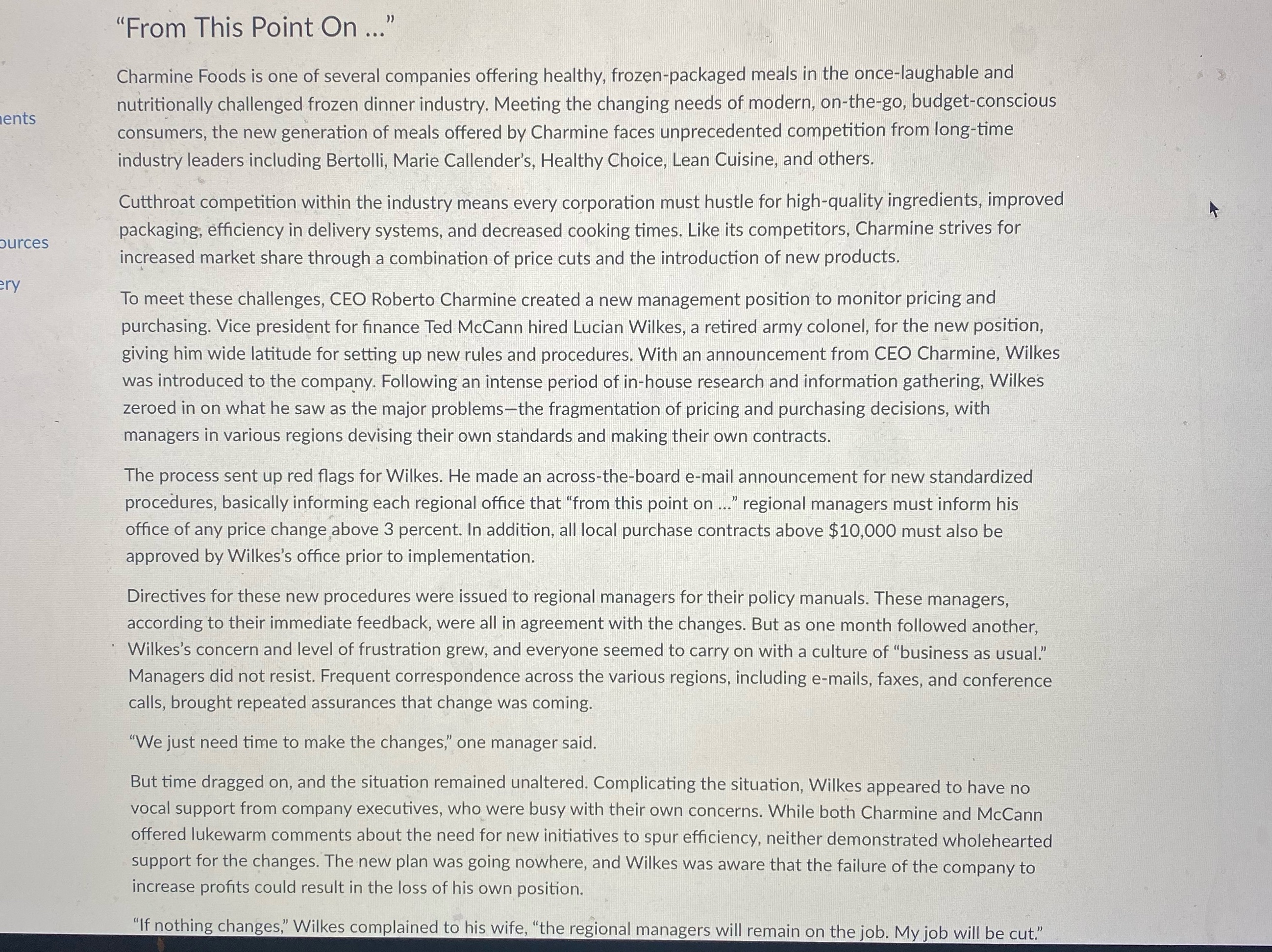Please help me with the question below1. In your opinion, what are the reasons that the regions are not responding to Wilkes's initiative for change? Is thisto do with his management/leadership style? Would you have done things differently? (5 Marks)
"From This Point On ..." Charmine Foods is one of several companies offering healthy, frozen-packaged meals in the once-laughable and nutritionally challenged frozen dinner industry. Meeting the changing needs of modern, on-the-go, budget-conscious ents consumers, the new generation of meals offered by Charmine faces unprecedented competition from long-time industry leaders including Bertolli, Marie Callender's, Healthy Choice, Lean Cuisine, and others. Cutthroat competition within the industry means every corporation must hustle for high-quality ingredients, improved packaging, efficiency in delivery systems, and decreased cooking times. Like its competitors, Charmine strives for ources increased market share through a combination of price cuts and the introduction of new products. ery To meet these challenges, CEO Roberto Charmine created a new management position to monitor pricing and purchasing. Vice president for finance Ted Mccann hired Lucian Wilkes, a retired army colonel, for the new position, giving him wide latitude for setting up new rules and procedures. With an announcement from CEO Charmine, Wilkes was introduced to the company. Following an intense period of in-house research and information gathering, Wilkes zeroed in on what he saw as the major problems-the fragmentation of pricing and purchasing decisions, with managers in various regions devising their own standards and making their own contracts. The process sent up red flags for Wilkes. He made an across-the-board e-mail announcement for new standardized procedures, basically informing each regional office that "from this point on ..." regional managers must inform his office of any price change above 3 percent. In addition, all local purchase contracts above $10,000 must also be approved by Wilkes's office prior to implementation. Directives for these new procedures were issued to regional managers for their policy manuals. These managers, according to their immediate feedback, were all in agreement with the changes. But as one month followed another, Wilkes's concern and level of frustration grew, and everyone seemed to carry on with a culture of "business as usual." Managers did not resist. Frequent correspondence across the various regions, including e-mails, faxes, and conference calls, brought repeated assurances that change was coming. "We just need time to make the changes," one manager said. But time dragged on, and the situation remained unaltered. Complicating the situation, Wilkes appeared to have no vocal support from company executives, who were busy with their own concerns. While both Charmine and Mccann offered lukewarm comments about the need for new initiatives to spur efficiency, neither demonstrated wholehearted support for the changes. The new plan was going nowhere, and Wilkes was aware that the failure of the company to increase profits could result in the loss of his own position. 'If nothing changes," Wilkes complained to his wife, "the regional managers will remain on the job. My job will be cut."







